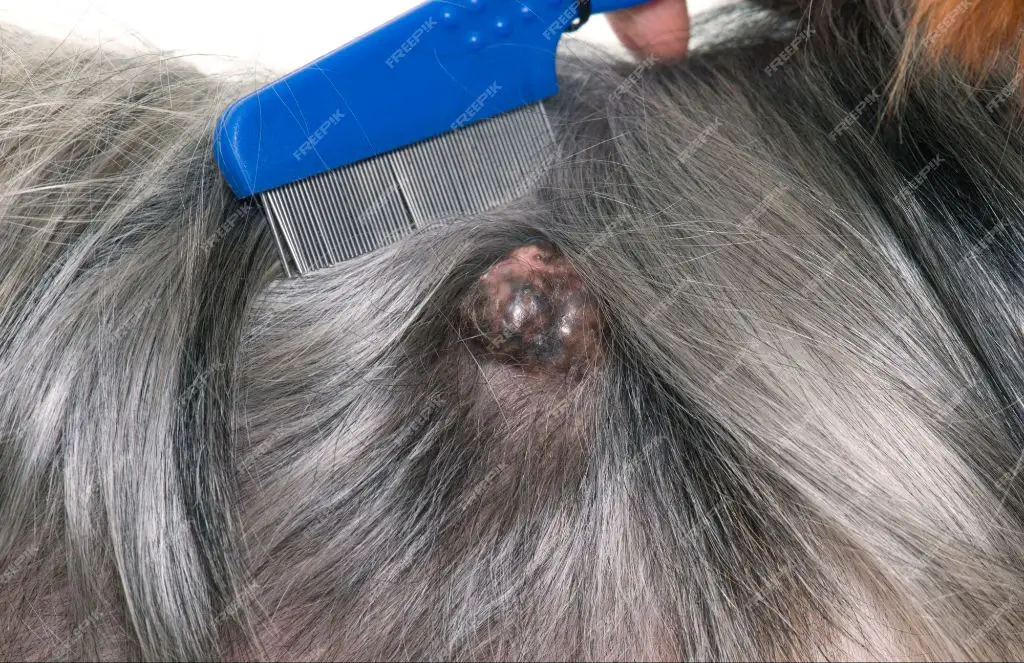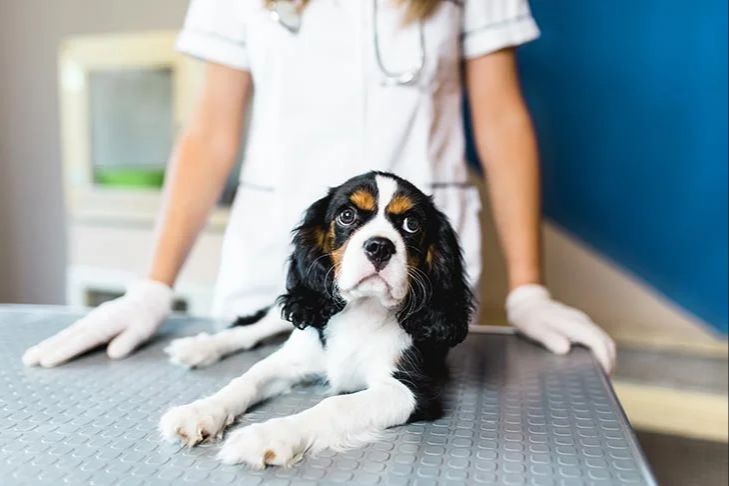Introduction
Cancer is unfortunately very common in dogs, with studies estimating that 1 in 4 dogs will develop cancer at some point in their lives. While cancer can affect dogs of all ages, it tends to be more common in older dogs, especially after the age of 10. The most common cancers seen in dogs include lymphoma, mast cell tumors, melanoma, soft tissue sarcomas, and osteosarcoma (bone cancer).
Tumors are abnormal growths of cells, and can be benign (non-cancerous) or malignant (cancerous). Benign tumors tend to grow slowly, remain in one location, and don’t spread to other areas of the body. Malignant or cancerous tumors, on the other hand, grow rapidly, invade nearby tissue, shed cells into the bloodstream or lymphatic system, and ultimately spread (metastasize) to other parts of the body. Cancerous tumors are made up of cancer cells that divide uncontrollably and don’t die off like normal cells.
While tumors can develop on any part of a dog’s body, some locations are more common for certain tumor types. For example, mast cell tumors often form on the skin, lymphoma affects the lymph nodes and organs, and osteosarcoma arises within the bones. Detecting tumors early and identifying whether they are benign or malignant is crucial for successful treatment and prognosis.
What is Cancer?
Cancer is a disease in which abnormal cells uncontrollably grow and spread to other parts of the body. Cancerous cells can clump together to form tumors. Cancer occurs when mutations in DNA cause cells to divide and reproduce rapidly without dying off. The accumulating cancer cells will continue dividing and may spread into other tissues through the blood and lymph systems.
Cancer cells are malignant, meaning they can invade and destroy surrounding healthy body tissue. As more cancer cells divide and spread, they deprive healthy cells of nutrients and space to grow. Cancer cells can also release substances that cause inflammation and damage to surrounding tissue.
Cancerous tumors are masses of tissue made up of cancerous cells. Tumors can be benign (non-cancerous) or malignant (cancerous). Benign tumors do not spread to other parts of the body. Malignant tumors are cancerous and invade nearby tissue. Cancer spreads when tumor cells break off from the original tumor and travel to other parts of the body through the lymph and blood systems, forming new tumors far from the primary site.
Common Cancers in Dogs
Cancer is unfortunately very common in dogs. Some of the most common cancers seen in dogs include:

- Lymphoma – This cancer affects the lymph nodes and lymphatic system. It is one of the most frequently seen cancers in dogs.
- Mast Cell Tumors – Mast cells are involved in the immune system. Mast cell tumors are the most common skin tumor seen in dogs.
- Melanoma – Melanoma is a cancer of pigment producing cells called melanocytes. Melanomas often occur in the mouth, on the skin, digit or in the eye.
- Osteosarcoma – This is the most common bone cancer seen in dogs. It most often occurs in the leg bones.
- Hemangiosarcoma – This is an aggressive cancer of blood vessel cells. It is more common in dogs than any other species.
- Mammary Gland Tumors – Mammary gland tumors are very common in unspayed female dogs. There are many types, most of which are malignant.
What are Tumors?
Tumors are abnormal masses of tissue that form when cells divide uncontrollably. There are two main types of tumors:
Benign Tumors
Benign tumors are non-cancerous growths that do not spread to other parts of the body. They grow slowly, have defined borders, and usually do not cause significant damage. Benign tumors can often be surgically removed.
Malignant Tumors
Malignant tumors are cancerous growths made up of cancer cells. Cancer cells divide rapidly and invade surrounding tissues, often spreading to other areas of the body through the blood or lymph systems. Malignant tumors are dangerous and can be life-threatening if not treated.
The main difference between benign and malignant tumors is that benign tumors do not spread, while malignant tumors can metastasize to distant sites. Malignant tumors tend to grow more aggressively and are harder to treat.
Appearance of Tumors

The appearance of tumors can vary greatly in dogs. Some key things to look for when checking your dog for potential tumors include:
Size – Tumors can range dramatically in size. Some may be very small lumps or bumps that are hard to detect, while others can grow quite large and be clearly visible protruding from the skin. Larger tumors tend to be more concerning.
Shape – Tumor shape can also vary. Some may be round or oval shaped lumps that are well-defined. Others may have irregular or undefined borders that blend into the surrounding tissue. The shape of a tumor does not necessarily indicate if it is cancerous or not.
Texture – Tumors can have a soft or firm texture. Benign fatty tumors often feel soft and movable under the skin. But malignant tumors tend to feel harder or firmly attached in place. Their surface may also feel irregular or bumpy.
Color – Tumors can present in a variety of colors. They may match the surrounding skin tone, be red/pink, black, white, or multicolored. Darkening or ulceration on the surface can indicate cancer. But color alone does not definitively diagnose a tumor as cancer.
Location of Tumors
Cancerous tumors can develop in many areas of a dog’s body. Some of the most common locations include:
-
Mouth – Tumors in the mouth are often easily spotted by pet owners during routine inspections of their dog’s teeth and gums. Oral melanoma and squamous cell carcinoma are common cancers of the mouth.
-
Skin – The skin is the largest organ in a dog’s body and tumors can arise anywhere. Common skin tumors include mast cell tumors, histiocytomas, lipomas, and sebaceous adenomas.
-
Lymph Nodes – Lymphoma is one of the most common cancers diagnosed in dogs. It involves the lymphatic system and results in enlarged lymph nodes. Lymph nodes in the neck, armpit and groin are most often affected.
Other common sites for cancerous tumors include the mammary glands, bones, spleen, liver, testicles, brain, and lungs. Tumors can often spread (metastasize) to other parts of the body from the original tumor site.
Signs of Cancer
There are several common signs of cancerous tumors in dogs that pet owners should look out for. The most obvious sign is the appearance of lumps, bumps, or abnormal growths on your dog’s body. These may appear suddenly and begin growing rapidly. Swelling in certain areas that continues to increase in size could also indicate a tumor or cancerous growth.
Another sign is pain or tenderness when you touch certain areas on your dog’s body. Your dog may cry out or nip at you when you brush against or try to touch lumps or swollen areas. This is likely a sign of discomfort and can occur when a tumor pushes against nerves or puts pressure on internal organs.

Unexplained bleeding or discharge from body openings is an alarming cancer sign. You may notice blood in your dog’s stool, urine, or coming from the nose or mouth. There could also be mucus-like discharge from the eyes, mouth, or genital areas. Any abnormal fluid drainage or bleeding warrants an immediate trip to the veterinarian.
Keep a close eye on your dog for any lumps, swelling, discharge, bleeding, or pain. Rapid changes in your dog’s body and any abnormal growths or fluid leakage need veterinary attention. Early detection and treatment is key for dealing with canine cancers.
Diagnosing Tumors
A vet will use several tests to diagnose cancerous tumors in dogs. The first step is usually a full physical exam. The vet will feel for any unusual lumps, bumps, or swelling and look for other signs of illness. This can help locate tumors and determine if they might be cancerous.
The next step is often a biopsy. This involves removing a small sample of the tumor to examine under a microscope. A biopsy can confirm if cancer cells are present and identify the type of cancer. There are a few methods for obtaining a biopsy depending on the tumor’s location and features.
Imaging tests like x-rays, MRIs, and CT scans can also detect tumors. These provide detailed pictures of the inside of the dog’s body. Imaging shows the size, shape, and location of tumors. It can also help spot if cancer has spread to other areas. Ultrasound is commonly used for easily accessible tumors.
Other tests like bloodwork and urinalysis can uncover abnormalities and signs of cancer. But a biopsy gives the most definitive cancer diagnosis. Once a tumor is confirmed as malignant, staging tests determine how far the cancer has progressed.
Treating Cancerous Tumors
There are several main treatment options for cancerous tumors in dogs:
Surgery
Surgery is commonly used to treat cancer in dogs when the tumor is localized and has not yet spread to other areas. The goal of surgery is to completely remove the tumor along with some surrounding healthy tissue to ensure all cancerous cells are eliminated.
Chemotherapy
Chemotherapy uses anti-cancer drugs to kill cancer cells and shrink tumors. It is often used when cancer has spread to other parts of the body, either alone or in combination with surgery and/or radiation therapy. The drugs are usually given intravenously or orally in cycles.
Radiation
Radiation therapy uses high-energy radiation to kill cancer cells and shrink tumors. It works by damaging cancer cell DNA. Radiation can be done externally by aiming radiation at the tumor or internally by implanting radioactive seeds. Radiation is often used alongside other treatments like surgery or chemotherapy.
Immunotherapy
Immunotherapy helps boost the dog’s immune system to better recognize and kill cancer cells. Some common immunotherapies used in dogs include vaccines, monoclonal antibodies, cytokines, and checkpoint inhibitors. Immunotherapy can be very effective, especially when combined with other traditional cancer treatments.
Preventing Cancer
There are several things dog owners can do to lower the chances of their dog developing cancer:

Spay/Neuter Your Dog: Spaying or neutering your dog, especially before 1 year of age, significantly reduces the risk of reproductive organ cancers like mammary gland tumors in female dogs and testicular cancer in male dogs. The removal of sex hormones minimizes their influence on the development of certain cancers.
Avoid Carcinogens: Limit your dog’s exposure to known environmental carcinogens like tobacco smoke, herbicides, insecticides, and chemical flea/tick collars or treatments. Don’t let your dog lick insecticide residues or chew on chemically treated lawns or plants.
Annual Vet Visits: Bring your dog for annual wellness exams, even as they get older. Your vet can perform routine health screenings to catch any cancers or tumors in the early stages when they are most treatable.
While not every case of cancer can be prevented, dog owners can significantly reduce their pup’s risk by making smart lifestyle choices. An ounce of prevention is truly worth a pound of cure when it comes to canine cancers.